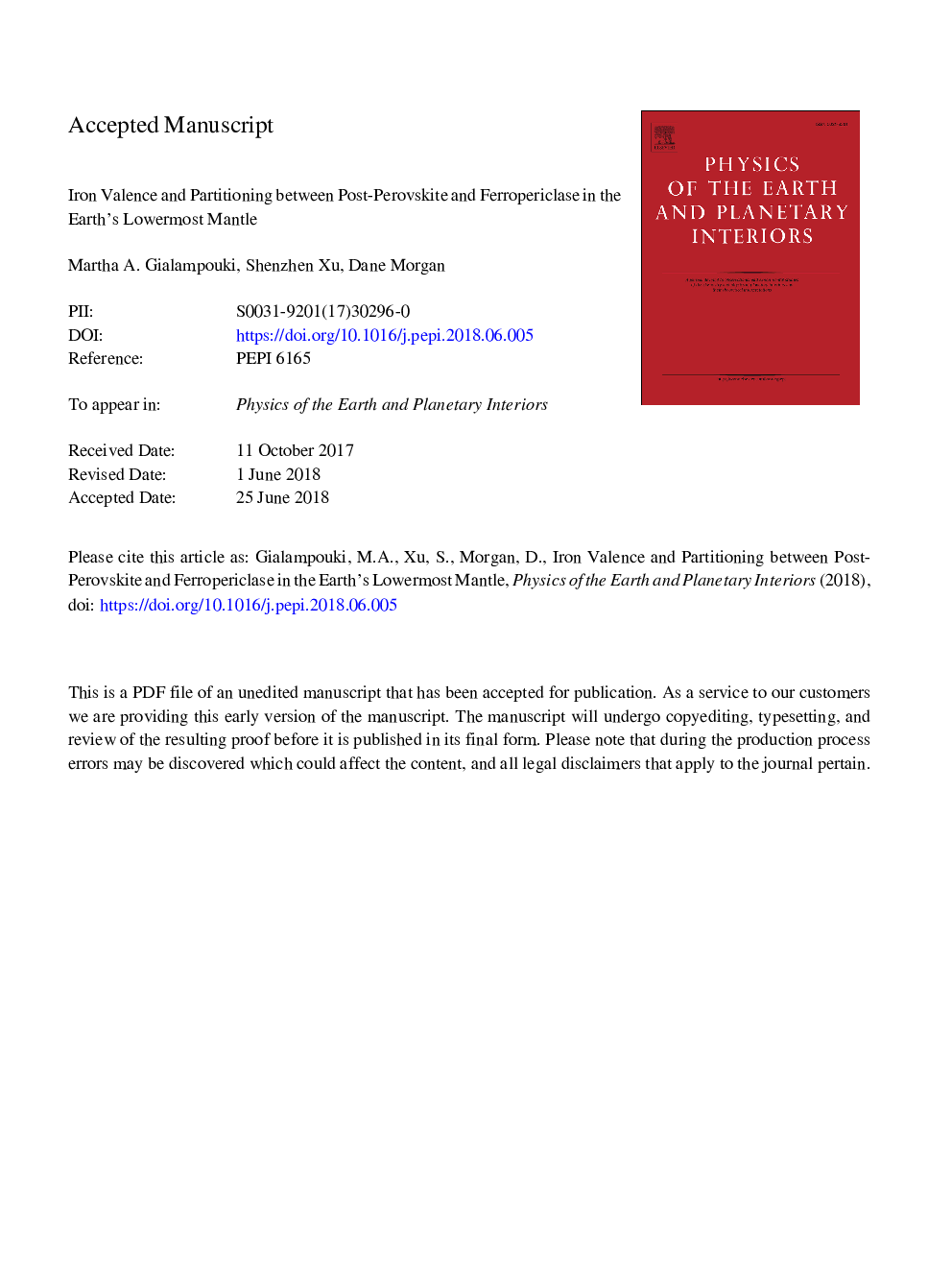| Article ID | Journal | Published Year | Pages | File Type |
|---|---|---|---|---|
| 8915668 | Physics of the Earth and Planetary Interiors | 2018 | 34 Pages |
Abstract
We use an ab initio based thermodynamic model to study the Fe partitioning (KDPPv-Fpâ¯=â¯(Fe/Mg)PPv/(Fe/Mg)Fp)) and Fe3+ concentration in the Al-bearing and Al-free post-perovskite - ferropericlase (PPv-Fp) systems, and results are compared to a similar recent model (Xu et al., 2017) for bridgmanite (Bm). Lower mantle (lower oxygen fugacity) and oxidizing experimental conditions (higher oxygen fugacity) are considered. Under lower mantle conditions, we predict that the Fe3+ concentration in both Al-free and Al-bearing PPv-Fp systems is very limited, due to the Fe3+ and Fe0 recombination and Fe2+ production (2Fe3++Fe0â3Fe2+). This effect leads to the majority of the total iron in the PPv-Fp systems being Fe2+ and the lowermost mantle is predicted to have little metallic iron. The Fe3+ content in PPv is approximately 3 times smaller than in Bm, which will lead to a large reduction of the amount of metallic iron in the lower mantle below the Bm/PPv transition. We also predict very little Fe in the PPv (KDPPv-Fpâ¯=â¯(Fe/Mg)PPv/(Fe/Mg)Fpâ¯<â¯0.06), although slightly more than in the Bm phase. We predict that for Al-bearing PPv, oxidizing experimental conditions will produce more than 10 times increase in Fe3+ and more up to a 3 times increase in Fe partitioning coefficient compared to lower mantle conditions, suggesting that one must be cautious in applying results from more oxidizing experimental studies to lower mantle conditions. These results will help researchers understand the Fe chemistry in lower mantle phases both under the Earth's lowermost mantle and laboratory experimental conditions.
Keywords
Related Topics
Physical Sciences and Engineering
Earth and Planetary Sciences
Geophysics
Authors
Martha A. Gialampouki, Shenzhen Xu, Dane Morgan,
